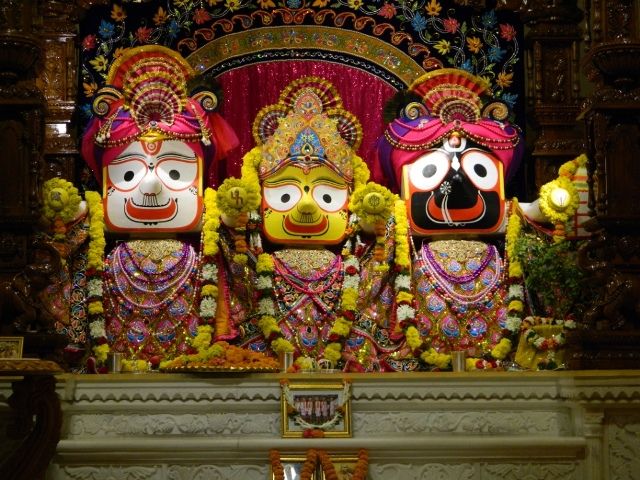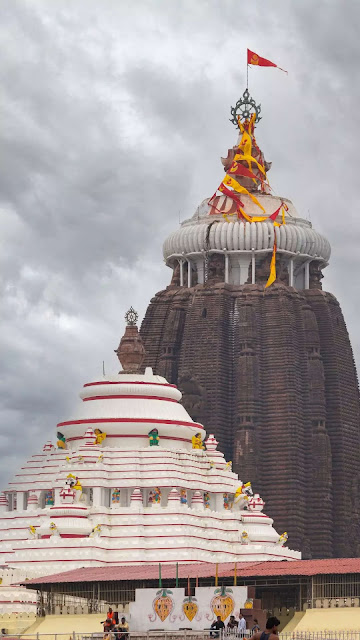The Jagannath Temple.
 |
| Jagannath Temple Puri |
The Jagannath Temple in Puri, Odisha, is one of the most revered Hindu temples in India, dedicated to Lord Jagannath (a form of Lord Vishnu). It is renowned as one of the Char Dham pilgrimage sites and is a major spiritual and cultural landmark.
History
- Construction: The temple was built in the 12th century CE by King Anantavarman Chodaganga Deva, a ruler of the Eastern Ganga Dynasty.
- Architecture: It is a magnificent example of Kalinga architecture, featuring a towering spire, intricately carved walls, and multiple smaller shrines within the temple complex.
- Cultural Importance: The temple is not only a spiritual hub but also a center for the Odia culture, with its traditions influencing art, literature, and cuisine in Odisha.
Myths and Legends
- Wooden Idols: The idols of Lord Jagannath, Balabhadra, and Subhadra are made of neem wood and are replaced every 12-19 years in a ritual called Nabakalebara.
- Divine Manifestation: It is believed that Lord Jagannath manifested here to give darshan to his devotees. The temple is also associated with the legend of Lord Krishna’s heart, which is said to be present in the deity.
- Indestructible Flag: The flag atop the temple flows in the opposite direction of the wind, symbolizing divine intervention.
- Mystical Food: The temple kitchen is considered the largest in the world, and the Mahaprasad (holy food offering) cooked here remains sufficient for all devotees, no matter the number.
How to Reach the Temple
- By Air: The nearest airport is Biju Patnaik International Airport in Bhubaneswar, about 60 km from Puri. From there, taxis and buses are available.
- By Train: Puri Railway Station is well-connected to major cities in India. It is just 2-3 km from the temple.
- By Road: Puri is well-connected by road with frequent buses and taxis from Bhubaneswar, Cuttack, and nearby cities.
Key Features
- Rath Yatra: The annual chariot festival, Rath Yatra, is the temple’s most celebrated event, where the deities are taken out in massive chariots for a grand procession.
- Nilachakra: The temple’s dome is crowned with a massive chakra (wheel), symbolizing protection and divine power.
- Non-Hindus: Only Hindus are allowed inside the temple, but non-Hindus can view the temple from the nearby Raghunandan Library.
Nearby Attractions
- Golden Beach: A serene beach near the temple, perfect for relaxation.
- Konark Sun Temple: Located about 35 km from Puri, it is a UNESCO World Heritage Site.
- Chilika Lake: Asia’s largest brackish water lagoon, located about 50 km away.
Best Time to Visit
- Winter (October to March): Pleasant weather and the best time to explore.
- Rath Yatra (June/July): Experience the grandeur of the world-famous festival.
The Jagannath Temple is not only a spiritual destination but also a testament to India’s rich cultural and architectural heritage. Its myths, rituals, and festivals continue to attract millions of devotees and tourists from across the globe.





No comments:
Post a Comment